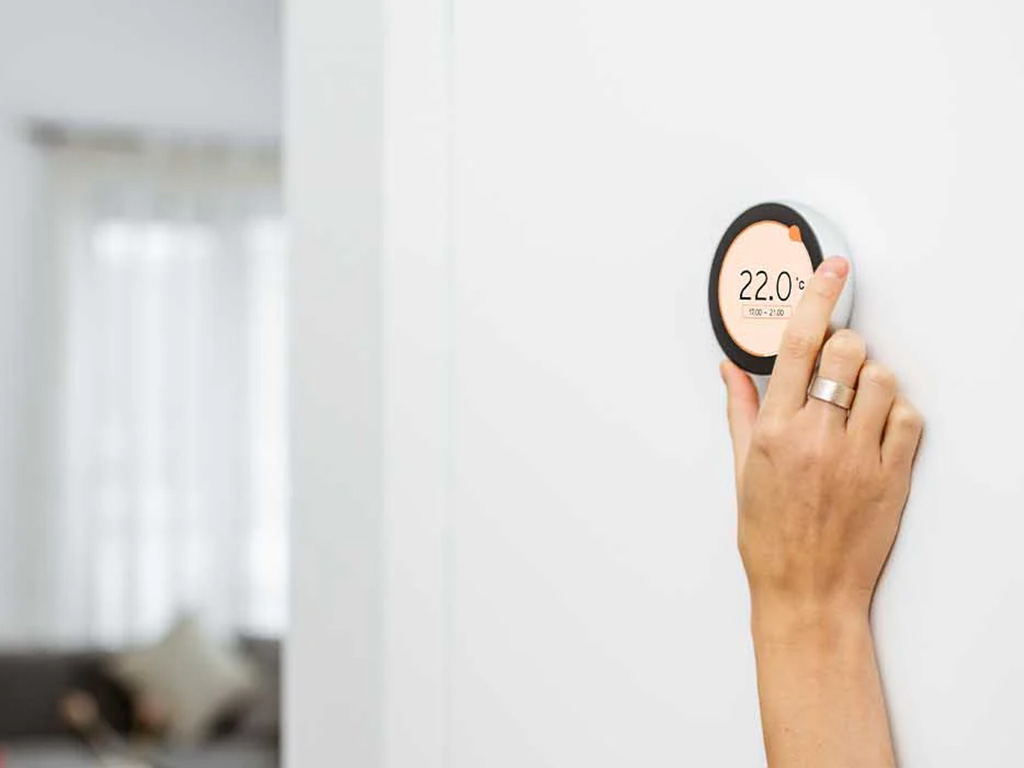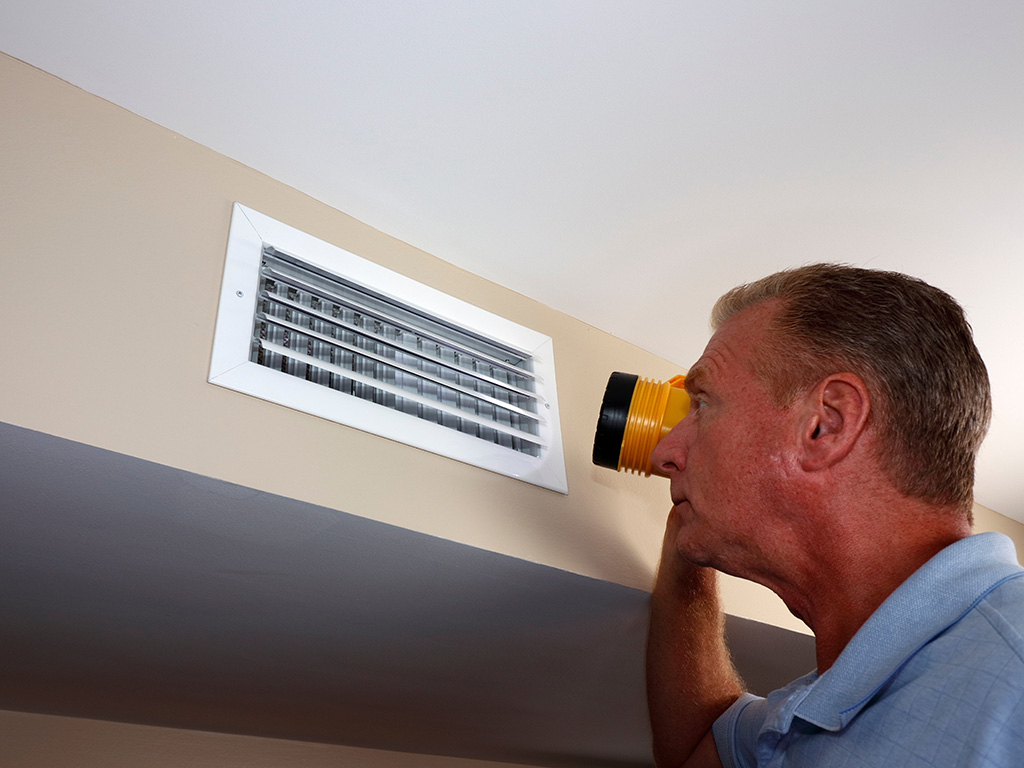Introduction: Furnace Will Not Blow Hot Air
A furnace that runs but won’t blow hot air is typically caused by thermostat issues, dirty air filters, ignition problems, or blower motor failures. When your heating system produces cold air instead of warm air, the problem often lies within user-controllable settings or maintenance-related components that homeowners can address safely. Most furnace not blowing hot air situations stem from preventable issues rather than major system failures.
Understanding why your gas furnace or electric furnace stops blowing warm air requires systematic troubleshooting that prioritizes safety while identifying the root cause.
PRO TIP: JD’s Plumbing, Heating and Air Conditioning is an expert in furnace repairs!

What This Guide Covers
This guide provides step-by-step diagnostics for when your furnace will not blow hot air, covering both simple fixes like incorrect thermostat settings and more complex issues requiring professional HVAC technician intervention. We focus on actionable solutions for gas furnaces, oil furnaces, and electric heating systems, but do not cover complete system replacements or advanced electrical work.
Who This Is For
This guide is designed for homeowners experiencing cold air blowing from their heating vents, property managers dealing with tenant heating complaints, and those with basic DIY skills who want to attempt safe repairs. Whether you’re facing intermittent heating performance issues or complete heating failure, you’ll find practical troubleshooting steps that can restore your home’s heating system.
Why This Matters
When your furnace system is blowing cold air instead of providing proper heating, your family’s comfort and safety are at risk, especially during heating season. Addressing furnace issues promptly prevents minor problems from escalating into costly furnace repair situations while maintaining energy efficiency and avoiding potential carbon monoxide hazards from malfunctioning heating systems.
What You’ll Learn: Furnace Will Not Blow Hot Air
- How to safely diagnose why your furnace runs but produces cold air instead of hot air
- Step-by-step troubleshooting for common causes of heating failure
- When to attempt DIY fixes versus calling a professional HVAC technician
- Prevention strategies to maintain proper furnace operation year-round
Table of Contents
Understanding How Furnace Heating Systems Work
A furnace heating system creates hot air by burning fuel (natural gas or oil) or using electric heating elements to warm it, then circulates the heated air throughout your home via a blower motor and ductwork. In gas furnaces, the combustion process heats a heat exchanger, while the blower fan pulls cool air from the return ducts, pushes it across the heated exchanger, and distributes warm air through the supply vents.
Modern heating systems rely on precise coordination between the thermostat, ignition system, fuel supply, and airflow components to maintain the current room temperature at your desired setting.
Key Components That Affect Hot Air Production
Thermostat control manages when your furnace runs by comparing the current room temperature to your thermostat setting and sending signals to start the heating cycle. The ignition system (pilot light in older units, electronic ignition system in newer models) initiates combustion, while the heat exchanger transfers thermal energy to the passing air. The blower motor and blower fan circulate air through the system, and air filters protect components while maintaining proper airflow.
This connects to the main furnace heating system because each component must function correctly for your system to blow hot air; failure in any single element can result in your furnace blowing cold air instead.
Normal Furnace Operation vs Warning Signs
Expected furnace behavior includes brief delays between thermostat calls and hot air production (30-90 seconds), consistent warm air temperature once running, and automatic cycling based on thermostat settings. Warning signs include the furnace running continuously while blowing cool air, frequent cycling on and off, unusual noises, or error codes on the control board.
Building on previous component knowledge, these warning signs often indicate specific component failures: a dirty flame sensor causing ignition problems, a clogged air filter restricting airflow, or a faulty control board disrupting normal operation sequences.
Transition: Understanding these normal operations helps identify specific problems when your furnace will not blow hot air as expected.
Most Common Causes When the Furnace Will Not Blow Hot Air
When a Furnace Will Not Blow Hot Air, Common causes range from simple user errors, such as incorrect thermostat settings, to mechanical failures requiring professional HVAC inspection, with dirty air filters and ignition problems accounting for the majority of service calls.

Thermostat and Control Issues
Incorrect thermostat setting accounts for over 40% of no-heat service calls, including setting the system to cooling mode, fan setting left on “ON” instead of “AUTO,” or dead thermostat batteries disrupting communication. A faulty thermostat may send incorrect signals to your heating system, causing the blower motor to circulate air without activating heating elements.
Quick diagnostic checks include verifying that your thermostat setting matches the heating mode, replacing the thermostat batteries, and confirming that the temperature setting exceeds the current room temperature by at least 3 degrees.
Air Filter and Airflow Problems
Dirty air filters and clogged air filter conditions restrict airflow through your heating system, causing overheating that triggers the high limit switch to shut down heating elements while the blower fan continues running. This safety mechanism prevents damage but causes your furnace to blow cold air until airflow is restored.
Clogged filters reduce efficiency by up to 35% and can damage the heat exchanger through prolonged overheating, making regular air filter replacement essential for proper furnace operation.
Ignition and Fuel Supply Failures
Pilot light issues in older gas furnaces or electronic ignition system failures in modern units prevent the combustion process from starting, leaving the blower motor to push cool air through your HVAC system. Gas supply interruptions, closed gas valve positions, or blocked burner orifices also prevent fuel from reaching heating elements.
Connection to previous airflow issues: even with a proper fuel supply, restricted airflow from dirty air filters can prevent safe ignition as safety systems detect inadequate ventilation conditions.
Key Points:
- Check thermostat settings and battery status first – simplest and most common fixes
- Replace dirty air filters immediately to restore proper airflow and prevent damage
- Verify fuel supply and ignition components function before calling professional help
Transition: These common causes require systematic diagnosis to identify the specific problem affecting your heating system’s performance.

Step-by-Step Troubleshooting When Your Furnace Will Not Blow Hot Air
Building on the common causes identified above, systematic troubleshooting prioritizes safety while moving from simple user-correctable issues to more complex problems requiring HVAC professional intervention.
Step-by-Step: Safe Furnace Diagnostic Process
When to use this: For homeowners experiencing a furnace blowing cold air with basic DIY skills and proper safety awareness of natural gas and electrical hazards.
- Check Thermostat Settings and Power Supply: Verify heating mode selection, ensure the temperature setting is above the current room temperature, replace the battery if needed, and check the circuit breaker status for the electrical power supply to the unit.
- Inspect and Replace Air Filter: Remove the furnace filter, check for visible dirt/debris blocking airflow, replace clogged filters with the proper size/rating, and allow 30 minutes for the system to reset after installation.
- Verify Fuel Supply and Pilot Light Status: For gas furnaces, confirm the gas valve is in the open position, check pilot light operation (on older units), and verify there are no gas odors indicating leaks requiring immediate professional attention.
- Check for Error Codes and Safety Shutoffs: Look for flashing lights or digital codes on the control board, check the status of the high limit switch reset button, and verify the flame sensor cleanliness in gas systems.
Comparison: DIY Fixes vs Professional Repairs
Issue Type | DIY Capability | Professional Required | Safety Risk | Typical Cost |
|---|---|---|---|---|
Thermostat Settings | High | No | Low | $0 |
Air Filter Replacement | High | No | Low | $10-30 |
Basic Cleaning | Medium | No | Low-Medium | $20-50 |
Ignition System | Low | Yes | High | $150-400 |
Gas Supply Issues | None | Yes | Very High | $200-600 |
Control Board | None | Yes | High | $300-800 |
Homeowners should attempt only thermostat and filter-related fixes, while gas flow problems, electrical components, and ignition system repairs require professional HVAC technician expertise due to safety risks and specialized tools.
Transition: Even with proper diagnostics, certain persistent problems require understanding common challenge patterns.
Common Challenges and Solutions
These challenges represent situations in which initial troubleshooting reveals deeper issues that require more targeted solutions to restore proper furnace operation.
Challenge 1: Furnace Runs But Still No Hot Air
Solution: Clean the dirty flame sensor with fine-grit sandpaper, and check for a high-limit switch failure caused by prolonged overheating due to restricted airflow or aging components.
A dirty flame sensor prevents ignition safety systems from detecting proper combustion, while a high-limit switch failure triggers a permanent safety shutoff requiring professional replacement to restore heating function.
To Learn More: Read Our Guide Furnace Repair vs. Replacement
Challenge 2: Intermittent Hot Air Production
Solution: Inspect for leaky ducts losing heated air before reaching living spaces and clear clogged condensate line that triggers safety lockouts in high-efficiency furnaces.
Leaky ducts can lose 20-30% of heated air through gaps that require metal duct tape sealing, while blocked condensate drainage prevents proper operation in modern high-annual fuel utilization efficiency systems.
Challenge 3: Furnace Won’t Stay Running
Solution: Address systematic overheating from accumulated dirt on furnace burners, blocked air vents restricting return airflow, or a failing blower motor unable to maintain proper air circulation.
Persistent shutdowns indicate serious safety concerns and require an immediate professional HVAC inspection to prevent equipment damage and ensure safe operation during the heating season.
Transition: Understanding these challenge patterns helps determine when professional intervention becomes necessary for safe, effective repairs.
Conclusion: Furnace Will Not Blow Hot Air
Effective troubleshooting when your furnace will not blow hot air follows a systematic approach prioritizing safety, starting with simple thermostat and filter checks before progressing to more complex fuel supply and ignition issues that require professional HVAC technician expertise.
To get started:
- Verify correct thermostat settings and replace batteries if needed
- Replace dirty air filters and wait 30 minutes for system response
- Contact a professional HVAC technician for gas supply, ignition system, or persistent overheating problems
Related Topics: Establishing regular maintenance schedules prevents most heating failures, while upgrading to programmable thermostats and high-efficiency filters improves long-term heating performance and reduces energy costs during heating season.
Additional Resources
Furnace maintenance checklists: monthly filter inspection; annual professional HVAC inspection for gas flow verification; flame sensor cleaning; and ductwork assessment for proper air circulation.
Emergency procedures: Natural gas odor response protocols, furnace system shutdown procedures, and emergency contact information for after-hours heating failure situations.
Energy efficiency improvements: Upgrading to high-efficiency equipment with annual fuel utilization efficiency, duct sealing for improved heating performance, and installing a smart thermostat for optimized heating system operation.
Learn more about JD’s Plumbing, Heating and Air Conditioning Furnace repairs and Furnace replacement!


